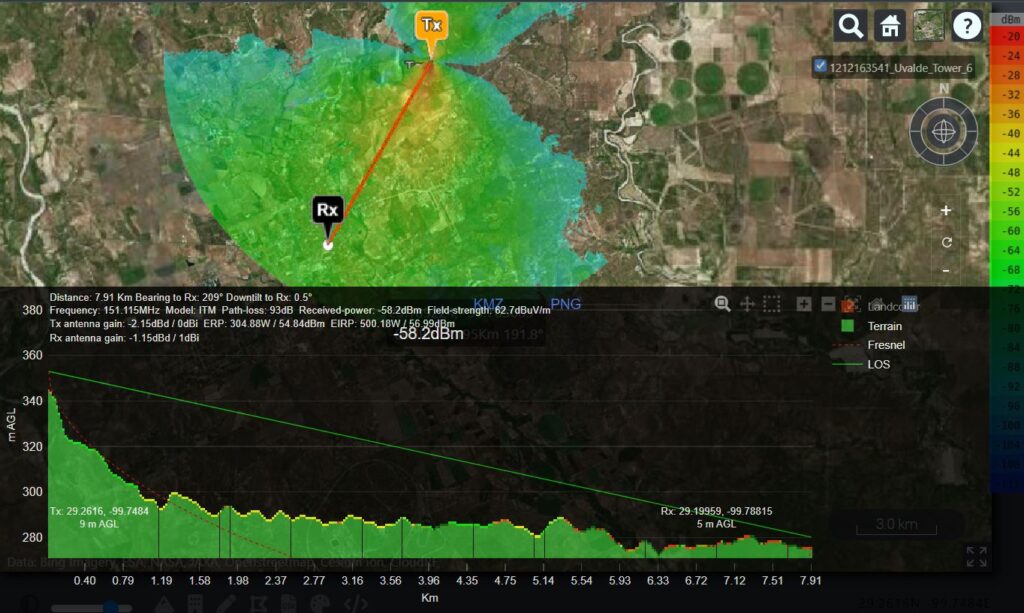The Uvalde school shooting left devastating destruction in its wake. In response to the tragedy, a Texas House of Representatives committee conducted an investigative report on the incident and uncovered multiple systemic failures that may have contributed to the loss of life that day.
One such failure was the breakdown of communication between law enforcement officers and school officials due to a radio system failure. The report found that Uvalde law enforcement had been supplied with radios and a radio tower, but that the equipment was never tested or reviewed prior to the incident.
As a result, officers were unable to communicate effectively during the shooting, leading to delays in engaging the shooter.
What happened
On that fateful day, Salvador Ramos, an 18-year-old senior at another school, allegedly purchased two assault rifles and used them to carry out one of the most devastating mass shootings in US history.
In just eight days, 22 people, including 19 elementary school children and two teachers and one subsequent casualty (one of the teacher’s husbands), lost their lives due to Ramos’ actions. 17 others were wounded in the attack.
The attack sent shockwaves through the entire community and left behind a trail of grief and sadness.
In the immediate aftermath, counselors were offered to students and staff to help cope with their emotions, while memorial services were held for those who lost their lives in the shooting.
Criticism of the radio system
Criticism of the radio system used by the Uvalde Police Department was cited as one of the key failures that allowed the deadly shooting at a Texas high school to unfold unchecked.
Reports reveal that radios used during the incident were slow to respond and had limited range. This limitation prevented officers from communicating with each other in real-time and making immediate decisions about how best to contain the situation.
As a result, officers were unable to respond as quickly and efficiently as they should have been able to.
The failure of the radio system was particularly troubling given that it had only been recently upgraded and replaced with new equipment in order to better serve the community.
Unfortunately, this upgrade was not sufficient to prevent communication breakdowns during this critical incident.
How the situation could have been handled better
The Uvalde School shooting was one of the deadliest school shootings in U.S. history, resulting in the deaths of nineteen students and three adults. During the incident, there was a critical flaw in the police strategy that hindered their response to the situation.
The incident commander on-scene believed that because any civilians inside were already dead, the situation had transitioned from an active shooter to one where the gunman had barricaded himself inside the school.
Consequently, police failed to recognize the need for a greater response and only deployed more officers or resources once it was too late.
Unfortunately, this system failure proved costly as officers were unable to respond quickly enough to save the lives of those still trapped.
Lessons that can be learned from this incident
The Radio System Failure during the Uvalde School Shooting highlights several important lessons that can be taken away from this tragic incident. The first is that law enforcement must remain vigilant and continue to find new strategies and tactics to prevent such tragedies.
This incident also emphasizes the importance of having robust and reliable communication systems in place. Poor communication systems can potentially hamper an emergency response and critical life-saving operations.
As such, it is important for individual law enforcement agencies to consistently monitor and maintain their radio systems, particularly in the event of a crisis situation.
Finally, it is also essential that training protocols be regularly updated to reflect any changes or adjustments made to communications systems.
This will ensure that law enforcement personnel are well-versed in the use of their communication systems, which is key to responding quickly and effectively during crisis situations.
These lessons should be taken seriously and implemented into ongoing training programs for both current and new law enforcement personnel. Doing so will help reduce the potential for tragedy, like what happened during the Uvalde School Shooting.
How did radio system failures have an impact on the response to the shooting?
The malfunction of the radio system during the Uvalde school shooting was a major contributing factor to the tragedy and should not be overlooked.
When responding officers attempted to contact dispatchers, they were met with silence as their calls went unanswered.
This failure put responding officers in an incredibly dangerous situation, hindered their communication, and delayed response times.
The towers used by local agencies are on the GATTRS P25 Phase 1 VHF Trunking system. Being such a large scale incident, it required a multi-agency response from neighboring agencies, Texas DPS, and Federal officials that were also on the GATTRS system but were affiliated to sites not connected to the Uvalde site due to the microwave failure which brought on the site trunking.
Some of the sites had been in site trunking for a few weeks prior to the shooting. Site trunking is when a site or sites in a trunked system become isolated from the system controller (usually because whatever is connecting the site to the network – fiber, copper, satellite, microwave, etc – goes down, or is deliberately shut down). They’re still operational as individual sites, but cannot communicate with the rest of the network. So if for example unit A is on site 1 and unit B is on site 2, and site 1 goes into site trunking, the trunk system and even the talkgroups the users are on will still appear to be functioning, but unit A and unit B won’t hear one another.
Dispatchers will receive an audible alarm on their PSAP backup control station radio, prompting them to turn on portable radios. Their consoles will not be able to use network talkgroups during site trunking mode.
That means that anyone responding outside of the coverage area of site 6 in Uvalde was not hearing the traffic from any radios that were operating on the Uvalde tower.
GATTRS Uvalde Tower 6 calulated coverage assuming FCC data is correct with it being 4.92 Miles North East of Robb Elementary with a Height Above Average Terrain (HAAT) of 9.8 Meters and an Effective Radiated Power (ERP) of 500 Watts

In addition, the school’s radios were incompatible with those used by local law enforcement, meaning they could not communicate directly with each other.
This caused further delays as officers had to switch radios when responding to the scene of the shooting.
This was far from an isolated incident, either. Multiple police departments around the country have reported similar radio system failures, leading to delays in critical emergency response times.
While the Uvalde school shooting was a tragedy, it should be viewed as a learning experience and used to shape better radio system policies to ensure these situations don’t occur again.
Global Communication Services, LLC
-Brian Martin
Global Communication Services, LLC offers a wide range of consulting options to meet the needs of public safety agencies. Our disaster emergency communications consulting solutions helps provide the technical means and modes required for voice and data communication in any type of situation.
